If your ultimate goal is to fully enjoy your adventure in Peru, then packing the right gear is an essential requirement that deserves careful attention. Below, we provide a comprehensive list to ensure you’re prepared to explore this fascinating destination.
- Packing list before traveling to Peru
- Specific packing list to travel to Peru
- Trekking Enthusiasts packing list
- A Well-Equipped Backpack for Trekking in Peru
- Clothing List Required for Trekking in Peru.
- Essential Document List for your trip in Peru
- Additional Packing List for your trip in Peru
- Additional Tips for your packing list
- You may also be interested in:
Packing list before traveling to Peru
It’s important to pack a variety of items to ensure a comfortable and safe experience. Here’s a basic list of things you might need:
- Travel Documents. Passport with at least six months validity, visa if required depending on your country of origin, identification cards, travel insurance, and copies of all important documents.
- Appropriate and Comfortable Clothing. Consider the climate of the regions you plan to visit. Include lightweight, breathable clothes for warmer areas, and extra layers for higher altitude regions where it can get cold at night.
- Comfortable Footwear. Sturdy walking shoes, preferably hiking boots if you plan on outdoor activities.
- Personal Hygiene Items. Toothbrush, toothpaste, shampoo, soap, deodorant, etc.
- Medications and Basic First Aid Kit. Bring any prescribed medications you need, as well as pain relievers, stomach upset medications, bandages, antiseptics, etc.
- Sunscreen and Insect Repellent. Essential, especially if you’ll spend time outdoors.
- Electronics and Accessories. Chargers, power adapters, cameras, mobile phones, etc.
- Small Backpack. For carrying personal items during excursions and activities.
- Cash and Credit Cards. Make sure to have enough local currency for small purchases and credit cards for emergencies.
- Reusable Water Bottle. Stay hydrated during your activities.
- Travel Guide or App. For information on destinations, activities, and local recommendations.
- Physical or Digital Maps. Especially useful if you plan to explore remote areas.
- Copies of Important Documents. Make copies of your travel documents such as passport, visa, and identification cards, and keep a copy separate from the originals in case of loss or theft.
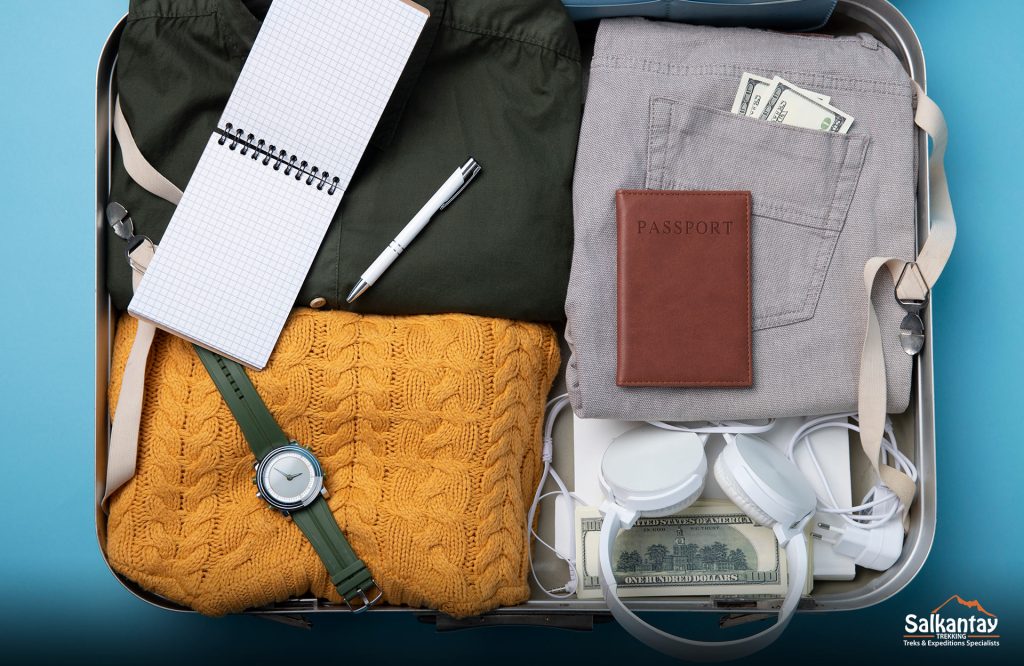
Specific packing list to travel to Peru
If you already know which natural region you will visit, pay attention to specific lists corresponding to each natural region of the country. These three natural regions of Peru differ not only in terms of geography and climate but also in their flora and fauna.
Specific packing list for Coastal Region
- Lightweight and breathable clothing. Suitable for Peru’s warm and humid coastal climate. Include t-shirts, shorts, dresses, skirts, and swimwear.
- Sun protection. Broad-spectrum sunscreen to protect you from intense sun rays.
- Hat or cap and sunglasses. To protect your head and eyes from the sun.
- Sandals or comfortable shoes. For walking on the beach and exploring the coast.
- Insect repellent. Especially important if you plan to visit areas near mangroves or high humidity zones.
- Beach towel or sarong. For relaxing on the beach.
- Waterproof bag. To protect your belongings from sand and water.
- Reusable water bottle. Stay hydrated on your walks.
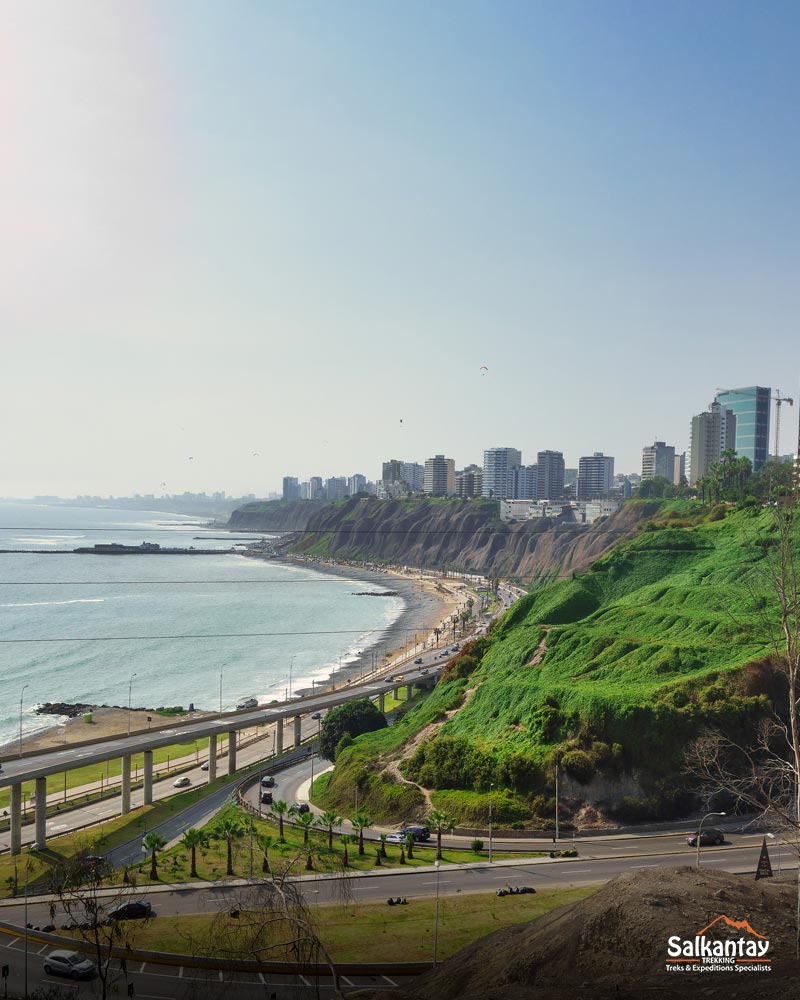
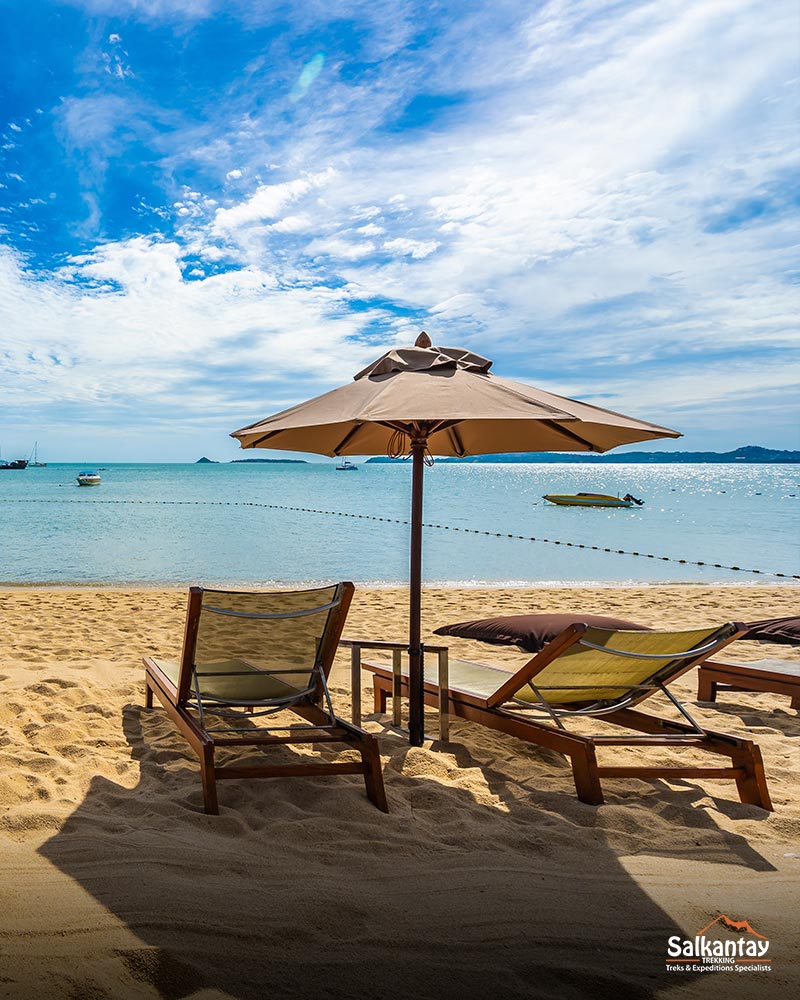
Specific packing list for Highland Region / Sierra
- Warm clothing and layers. Including sweaters, jackets, scarves, and gloves for cold nights and temperature changes.
- Thermal clothing. To wear under your outerwear and keep warm in colder climates.
- Hiking boots or sturdy footwear. Especially important if you plan to hike in the mountains.
- Long pants. To protect your legs from cold and elements.
- Warm hat or cap. To protect your head from wind and cold.
- Large and sturdy backpack. To carry your belongings during hikes and walks.
- First aid kit. Includes medications for altitude sickness, pain relievers, bandages, etc.
- Flashlight or headlamp. Essential if you plan to camp or hike at night.
- Map and compass or navigation device. To orient yourself in the mountains.
- Water bottle and/or thermos. Stay hydrated and carry hot drinks to combat the cold.
- Energy snacks. Such as nuts, granola bars, or chocolate, to recharge during hikes.
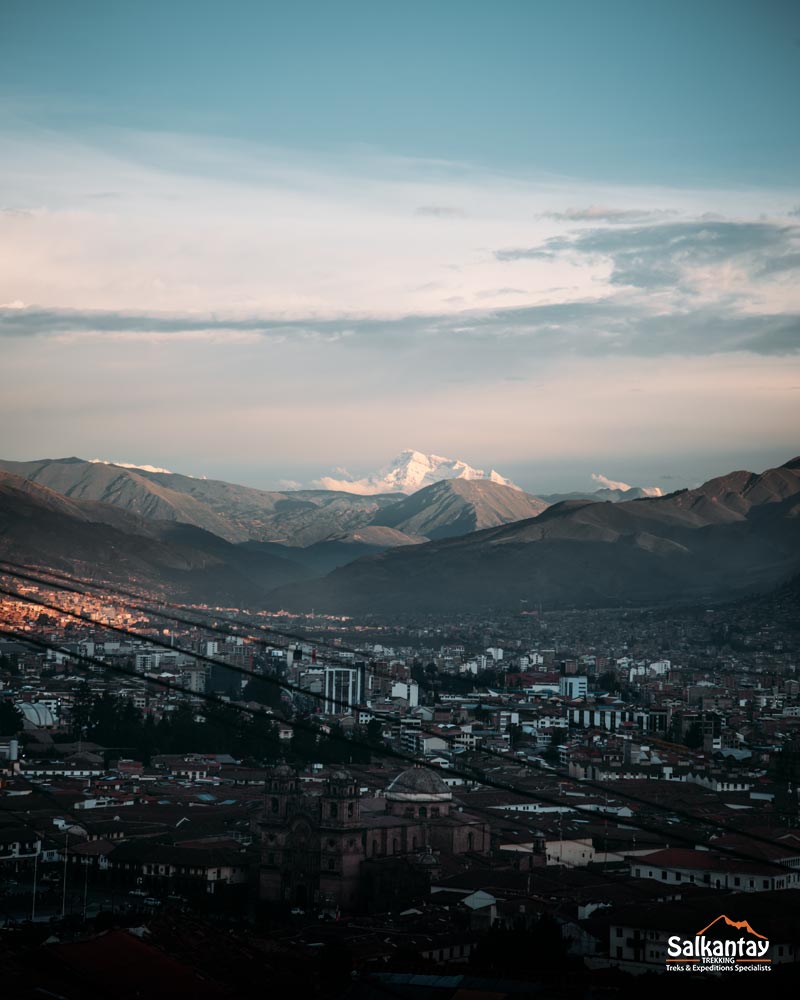
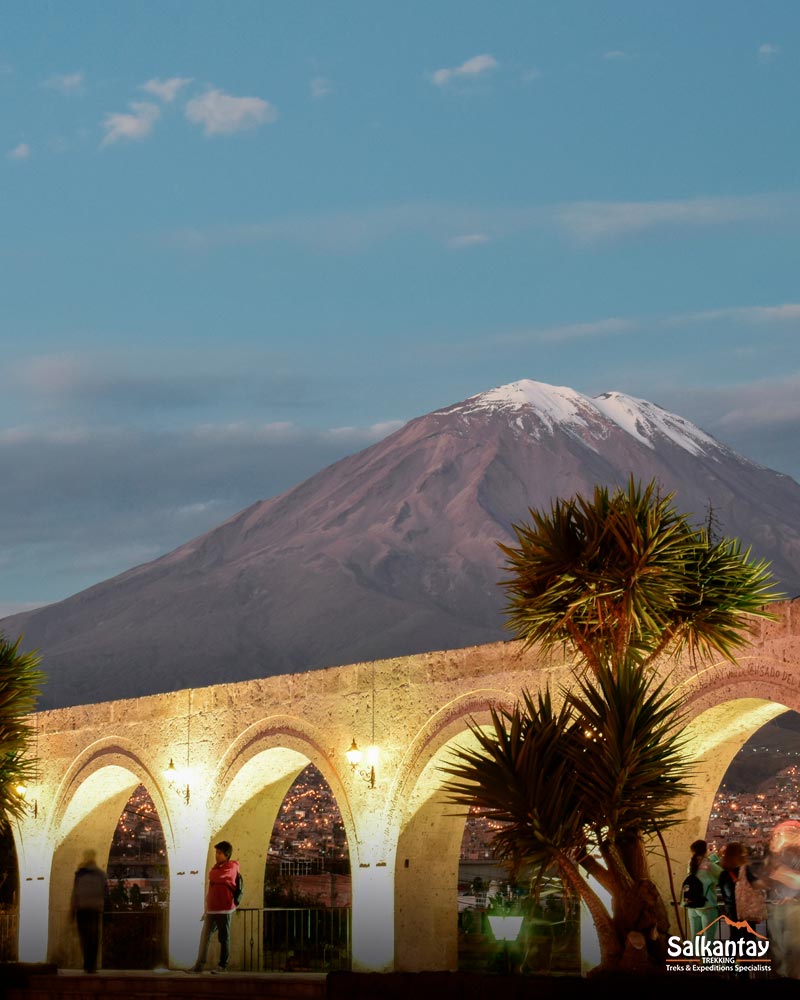
Specific packing list for Amazon Jungle Region / Selva
- Lightweight and breathable clothing. Including t-shirts, shorts, dresses, and swimwear. Opt for cool fabrics to keep you comfortable in the tropical climate.
- Comfortable and sturdy footwear. Sandals for walking and, if hiking in the jungle, closed-toe shoes or boots that are resistant and can protect you from moisture and insects.
- Insect repellent. Essential to protect against mosquitoes and other insects common in the jungle.
- Waterproof clothing or poncho. Due to frequent rains in the jungle, it’s useful to carry waterproof clothing to keep dry during storms.
- Hat or cap and sunglasses. To protect yourself from the intense sun while exploring the jungle.
- Flashlight or lantern and spare batteries. Essential for illuminating the way at night or in areas with low light.
- Reusable water bottle. Stay hydrated in the warm and humid jungle climate.
- Biodegradable sunscreen. To protect yourself from the sun while venturing into the jungle.
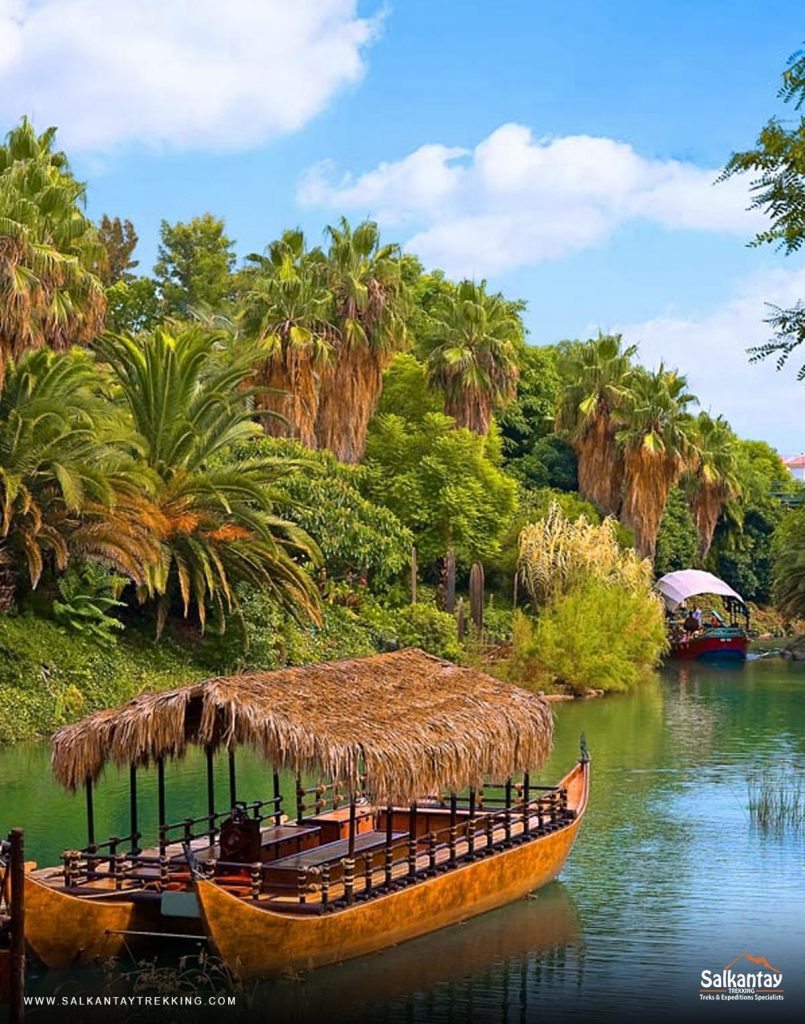
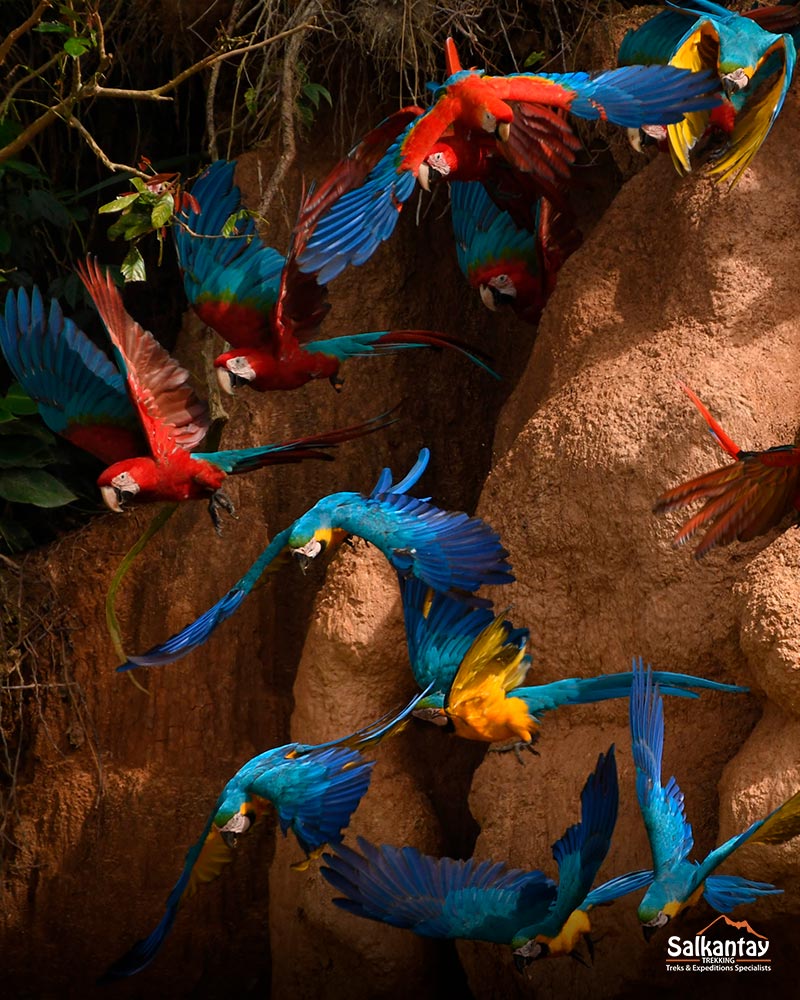
Trekking Enthusiasts packing list
Nothing can stop you with the right gear, let’s do it.
- Hiking backpack. A sturdy and comfortable backpack is essential for carrying your belongings during your hikes. Look for one with enough capacity to carry everything you need.
- Proper footwear. A pair of durable and comfortable hiking boots are essential for walking on varied and challenging terrain. Make sure they are well-fitted and waterproof if walking in wet areas.
- Appropriate clothing. Opt for comfortable, breathable clothing that keeps you cool and dry during your hikes. Include long and short-sleeved shirts, lightweight and quick-drying pants, waterproof jacket, and extra layers for cold weather.
- Camping gear. Only if necessary. If you plan on multi-day trekking and camping in nature, make sure to bring a tent, sleeping bag, sleeping mat, flashlight or lantern, and other essential camping items.
- Basic first aid kit. Includes basic supplies such as bandages, antiseptics, pain relievers, altitude sickness medications, among others.
- Hydration and nutrition. Bring a reusable water bottle and energy snacks like nuts, granola bars, or chocolate to stay hydrated and energized during your hikes.
- Sun protection and insect repellent. Don’t forget to apply broad-spectrum sunscreen and bring insect repellent to protect yourself from the sun and insects while outdoors.
- Maps and navigation devices. Bring physical maps or GPS navigation devices to orient yourself during your hikes and avoid getting lost in remote areas.
- Camera. To capture the incredible landscapes and moments of your trekking adventures in Peru.
- Specific accessories. May not be necessary as the company you decide to travel with will provide them: Hiking poles, water purification system, compact and lightweight sleeping bag, ice axe, and crampons (on certain routes), and multifunctional buff or scarf.
A Well-Equipped Backpack for Trekking in Peru
A well-equipped backpack is crucial to ensuring your comfort, safety, and well-being during the adventure. Everything depends on the duration and difficulty of the hike, as well as the specific conditions of the environment you’ll be exploring.
- Water.
- Energy snacks.
- Sunscreen and insect repellent.
- Appropriate clothing.
- Waterproof jacket or windbreaker.
- Headlamp or handheld flashlight.
- Multi-tool or multi-purpose tool.
- Mobile phone and portable charger.
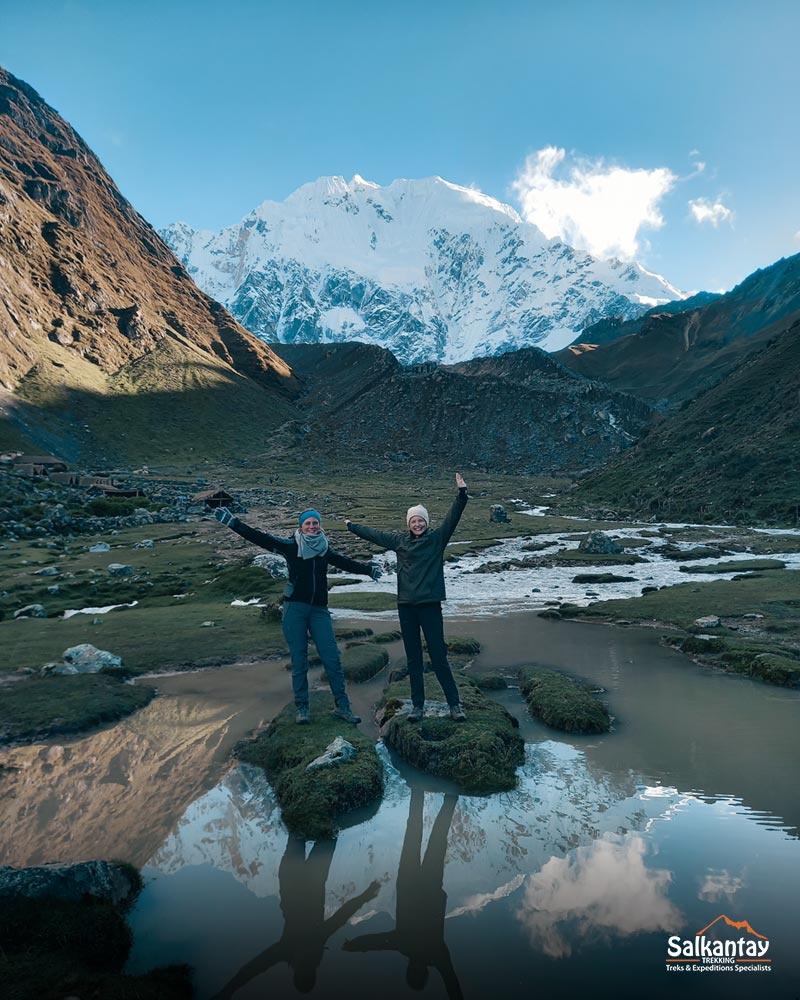
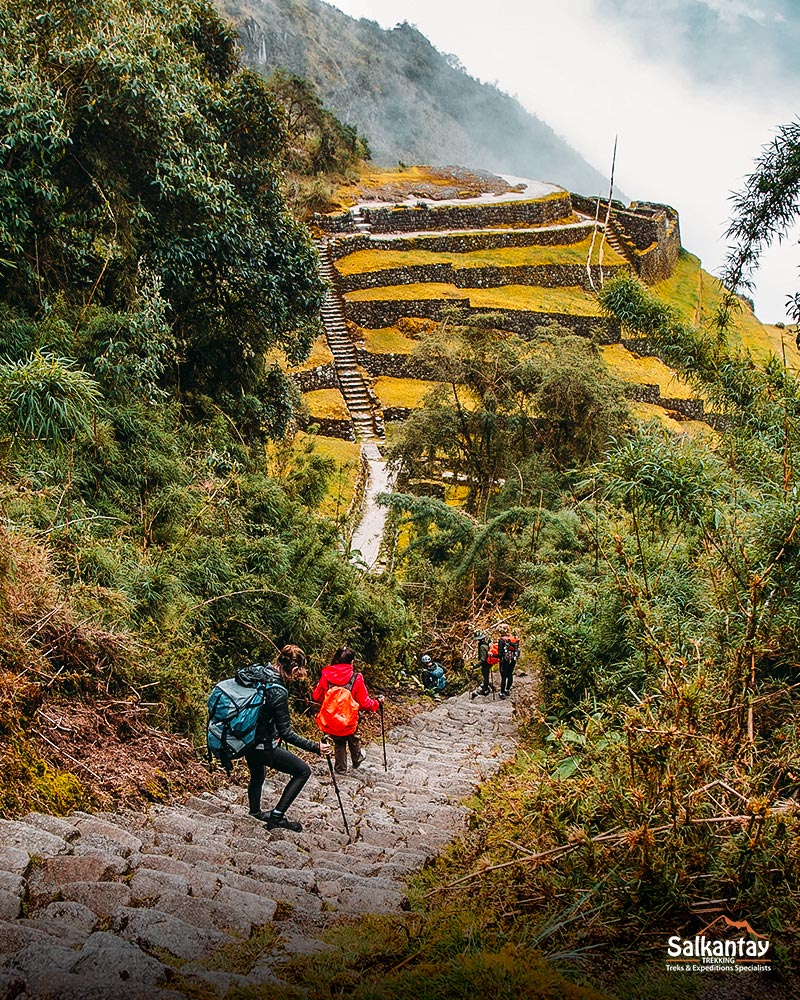
Clothing List Required for Trekking in Peru.
For trekking in Peru, it’s important to dress appropriately to adapt to a variety of weather conditions and terrains.
- Breathable base layer. Use shirts and long pants made of breathable materials that absorb moisture and keep your skin dry during the hike.
- Mid-layers. Depending on altitude and weather, you may need mid-layers to keep warm. Opt for lightweight but warm sweaters or jackets that you can easily put on and take off according to changing conditions.
- Waterproof jacket or windbreaker. Carry a waterproof jacket or windbreaker to protect yourself from wind and rain.
- Thermal clothing. Optional. If you plan to trek in high mountain areas or during colder times of the year, consider wearing thermal clothing under your outerwear to keep warm.
- Convertible pants. Opt for pants that can convert into shorts to adapt to temperature and terrain changes during the hike.
- Trekking socks. Wear thick, breathable socks that absorb moisture and protect your feet against blisters and chafing. Avoid cotton, as it retains moisture.
- Proper footwear. Use hiking boots or sturdy shoes with a gripping sole to provide stability and traction on varied terrain. Make sure your shoes are well-fitted and comfortable for long walks.
- Hat or cap and sunglasses. Protect your head and eyes from intense sun using a wide-brimmed hat or cap and UV-protected sunglasses.
- Lightweight gloves. In high mountain areas or during cold seasons, consider bringing lightweight gloves to keep your hands warm.
- Swimwear. If your route includes the possibility of swimming in lakes or rivers, bring swimwear and a lightweight towel to enjoy a refreshing swim during the hike.
Essential Document List for your trip in Peru
You’ll need to make sure you have the necessary documents to pass all checks. Please check specific entry requirements for Peru according to your nationality before traveling.
- Valid passport.
- Visa, if required.
- Airline ticket.
- Immigration card / Andean Migration Card.
- Travel insurance (optional).
- Vaccination certificate, if applicable.
Additional Packing List for your trip in Peru
We suggest you take a look at these lists so you don’t forget anything.
For Women
- Feminine hygiene items.
- Facial and lip sunscreen.
- Light makeup and personal care products.
- Additional underwear.
- Sports bras.
- Portable toiletry bag.
- Hair accessories.
For Men
- Personal grooming items.
- Sunscreen and lip balm.
- Extra underwear and socks.
- Portable toiletry bag.
- Hair accessories.
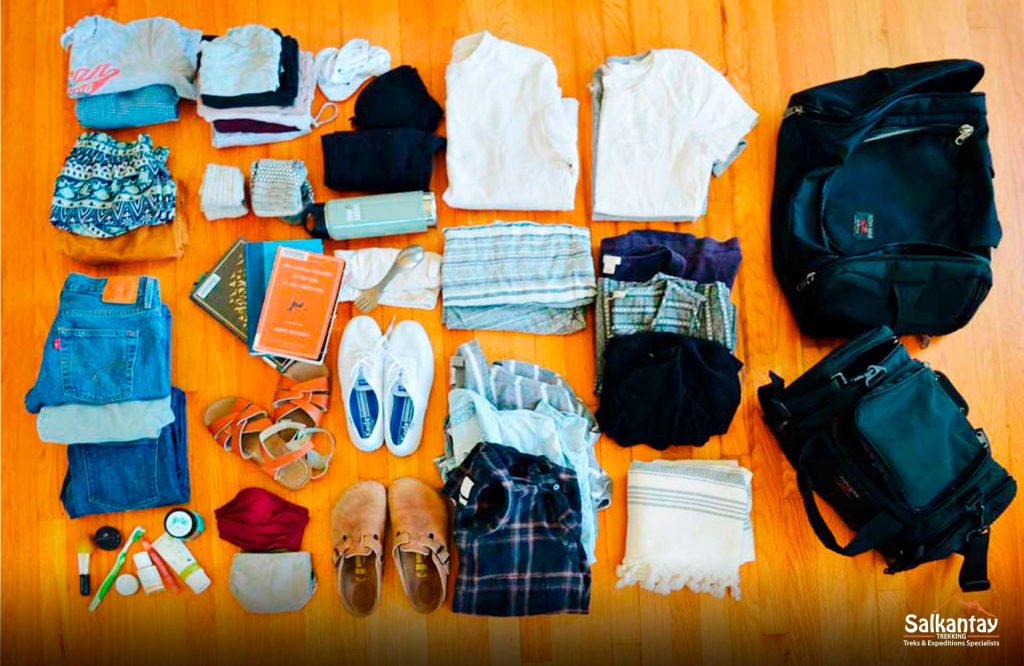
Additional Tips for your packing list
Effective packing can make a difference between a comfortable, organized trip and one full of inconveniences.
- Less is more. Packing according to the principle of “less is more” has several benefits that can make your trip more comfortable and practical.
- Optimize space. Roll clothes instead of folding them to maximize suitcase space. Use compression bags for bulky items like coats or sweaters.
- Prioritize essentials. Place items you may need during the trip, such as documents, medications, and personal hygiene items, in an easily accessible place in your carry-on luggage.
- Consider weight and restrictions. Check your airline’s luggage weight and size restrictions to avoid additional costs. Distribute weight evenly in your luggage to facilitate transportation.
- Pack versatile items. Take clothes that you can easily mix and match to create different outfits. This will allow you to pack less clothing without sacrificing wardrobe options.
Remember to check the weather forecast before packing to ensure you include everything you need according to current conditions and temperature changes during the day and night. It’s important to have an adventurous attitude and readiness to explore nature at its finest.
You may also be interested in:
- Inca Trail: Essential Gear for an Unforgettable Adventure
- Best time to visit Cusco, Peru
- Cusco Travel Guide: Tips and Recommendations for your Trip
- Cusco Weather: The Complete Guide to Year-Round Climate
- Machu Picchu Weather: Climate and Forecast
- Essential Tips for Your Inca Trail Trek to Machu Picchu
- What to Wear on a Trip to Cusco, Peru
- Peru Weather – Everything You Need to Know
- The Ultimate Travel Guide to Machu Picchu
- 16 Essential Tips for Solo Travel in South America
- The Ultimate Peru Packing List 2024 (Part 1)
- The Ultimate Peru Packing List (Part 2)

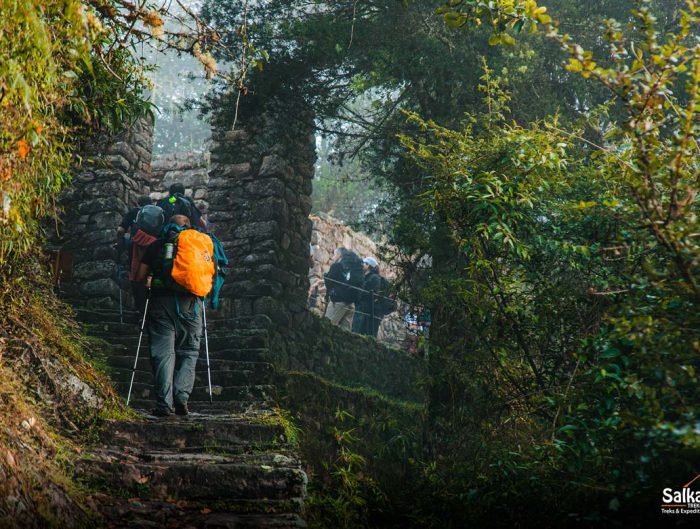

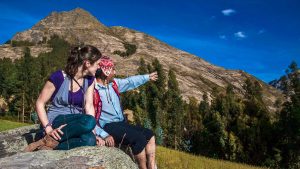

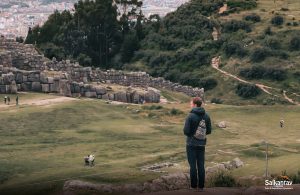

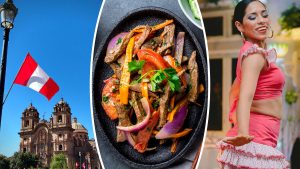
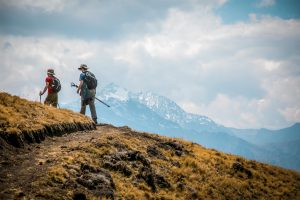




Leave A Reply